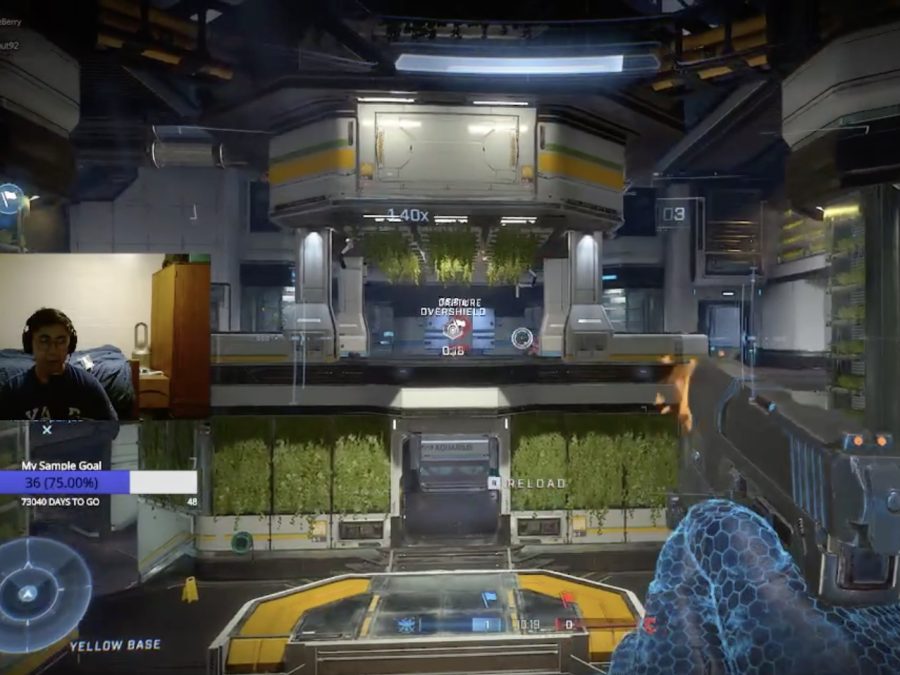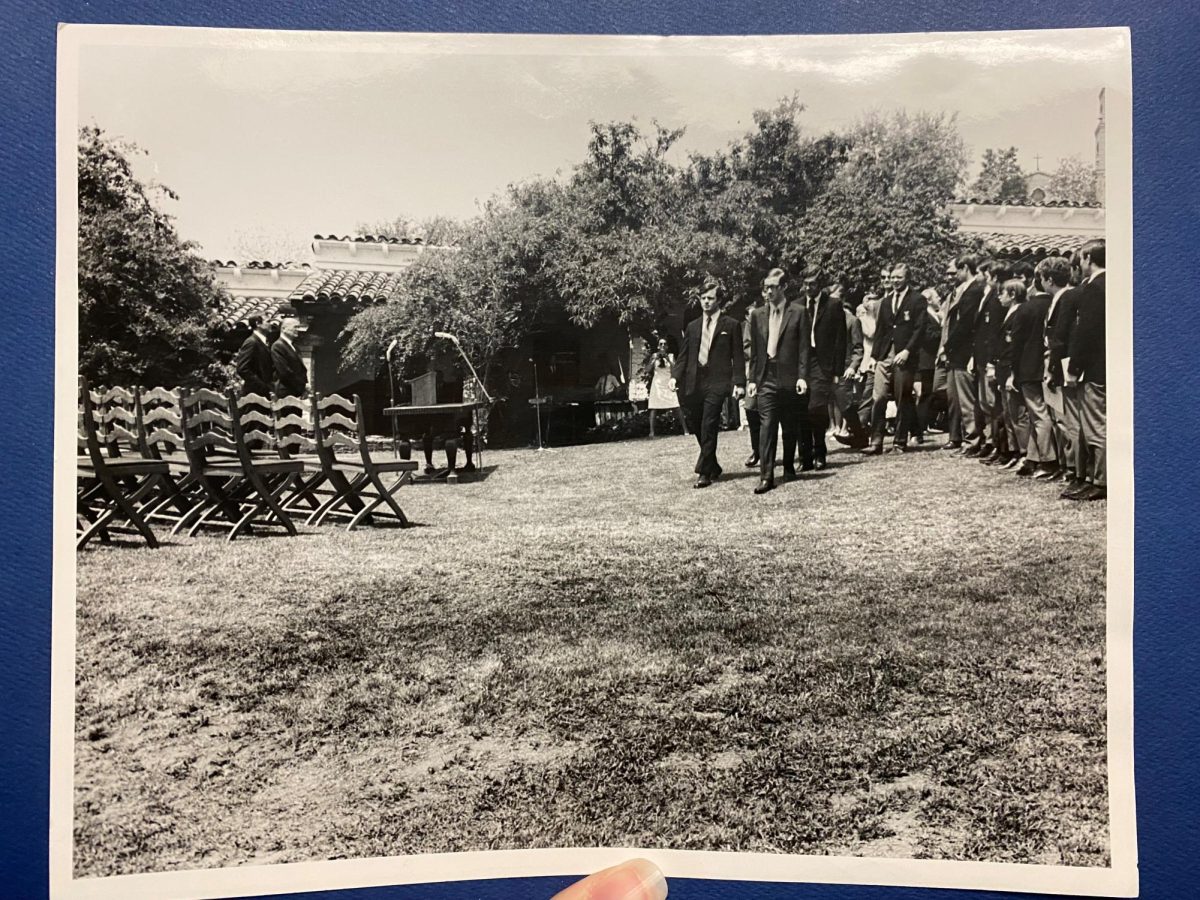Multiplayer first-person shooter games are incredibly popular, with their presence felt everywhere. In the Hooper Center and the Fawcett Library, it is frequent to see students playing a round of Valorant between classes, rapidly clicking their mouses and tapping their keyboards to achieve victory. In the genre, there are three massive series, each offering their own take on multiplayer first-person action: Battlefield, Call of Duty, and Halo; each had a release in late 2021. How do the multiplayer aspects of these games compare to each other, and which one should you pick? The answer can be found by examining them.
Call of Duty has always had a yearly release since 2004. This yearly cycle began to feel repetitive, until 2019’s Modern Warfare when the battle royale expansion Warzone changed some of the core aspects, making for more engaging gameplay, as well as being set in a more modern conflict.
“It has decent movement,” Gerry Song (‘22) said.
“I love Warzone,” Katie Arzate (‘23) said. “[The weapons] sound decently accurate, it gets the point across.”
The newest release, Call of Duty: Vanguard, was built on the changes introduced with Modern Warfare. However, excitement for Vanguard was low.
“I think I heard about Vanguard around or after launch,” Conrad Poon (‘23) said.
Vanguard has been compared to Modern Warfare, but trades the drones, helicopters, and present-day cities of Modern Warfare for the bombers, sun-drenched islands, and trenches of WWII. However, the games share the same software engine, which naturally leads to similarities in gameplay; they share many features such as being able to sprint for a short amount of time, the ability to mount weapons on surfaces, and similar weapon customization, which leads to less innovation in the franchise.
Map designs in Vanguard are either small maps or larger ones with a variety of buildings, both of which feel fun. A standout map is Hotel Royale, which is set in war-torn Paris. Players battle in the reading rooms, bars, and lobbies of the stately hotel. From the roof, players crash down through the skylights onto unsuspecting foes. Explosions can be heard in the distance as spotlights illuminate bombers in the night sky. Overall, the map offers a level of verticality with players being able to climb to the roof of the map, on top of its mix of short-range, mid-range, and long-range areas.
As a new release, Vanguard brings with it a few new features and builds on familiar ones. Destructible walls were a new feature heavily emphasized in Vanguard’s trailers yet are sparse on most maps. Overall, Vanguard is fun, taking the Call of Duty formula back to World War II, but it cannot escape comparisons to Modern Warfare because of its similar gunplay, engine, and animations.
Rating: 6/10
Halo has stood out from other titles, whether that be the fast-paced, run-and-gun PC shooters of the 1990s or the massively popular multiplayer games of the 2010s. The large number of shots a player can take (referred to as time to kill), the variety of unique weapons, and its science fiction setting differentiate Halo from Call of Duty and Battlefield. While most games were set in World War II or the present day, the typical Halo match saw futuristic super soldiers fighting in the jungles, forests, and mountains of far-off planets instead of the beaches of Normandy or modern desert landscapes. Instead of battling each other with just conventional weapons but with powerful lasers, alien crystals that tracked opponents, and grenades that stuck to enemies. Halo was inherently slower than other first-person shooters and innovated in the genre, pushing first-person shooters forward.
However, as technology progressed, Halo lost its identity as a slower game, moving away from the pacing that made it successful and following the trends of faster games. Halo Infinite renewed Halo’s features for a new generation while keeping the original formula.
“It doesn’t rely on fast movement […] to kill people, that’s the reason it has a longer time to kill,” Yoyo Meng (‘23) said. “You need to kill someone in a very short time [in other movement shooters].”
The movement is much slower, leading to the player thinking out each of their actions.
“This Halo is definitely faster than other Halos, but much slower than other shooters,” Yoyo said.
Halo also does not emphasize pre-selected loadouts like Call of Duty or Battlefield, with weapons being fought over on the map, leading to more intricate strategies and a sense of fairness.
“Most of the guns are really fun, with energy weapons being pretty fun,” Yoyo said.
It is not hard to see why; using a particular weapon, the Heatwave, a player can sidestep an opponent,
Infinite does not fail to pay homage to previous entries, as many weapons make their return, some with much-needed changes. The Assault Rifle, which felt like an inaccurate peashooter in previous entries, feels like a suitable weapon at short and mid ranges, and other weapons are introduced or changed.
Halo Infinite‘s maps complement its arena-based gameplay. Most maps are small, with some verticality that offers spaces to tactically position and get the drop on an enemy. Each map has a distinct visual style. One map, Bazaar, is a market on Earth, whereas Aquarius is a terraforming facility. The layouts are wide and simple to learn.
However, the nuance and depth of the map design come from effectively utilizing all the skills learned throughout Infinite: map knowledge, aim, and smart movement. The addition of verticality in most maps helps with this, as having the high ground is an advantage that players must fight for.
Ability pickups are an interesting addition. They give the player an upgrade when they are picked up, such as shooting a radar dart, grappling with a grappling hook, or dashing forward. There are some pickups that stand out; the grappling hook and deflector are exciting and fun to use, whereas pickups such as the radar and drop wall shield are uninteresting. The grappling hook allows the player to swing around and pull off impressive plays, whereas the drop wall seems to break in two hits, making it useless and uninteresting.
Overall, Infinite keeps to its roots while adapting its formula for a new audience. This makes it feel refreshing and unique compared to other modern shooters.
Rating: 9/10
Battlefield 1, the 2016 entry in DICE’s Battlefield series, was met with much acclaim among fans and critics, which led to high anticipation for 2021’s Battlefield 2042, which was set in the near future during a global climate crisis.
The trailers showed exciting, massive battles taking place from the arctic tundra to modern cities in the desert. However, on its release, it was common to see opponents failing to die even after they received enough hits, helicopters falling from the sky and exploding unprovoked, or for objects to constantly appear and disappear. Battlefield 2042 is a fun experience but is plagued with issues and features that are incohesive with the base design.
Battlefield has emphasized large, open-scale combat in the past, with giant maps, vehicles, and dozens of players. 2042 has larger maps, more players, and more vehicles. However, this implementation goes against the new core gameplay.
2042’s movement is meant to be faster, with crouch slides and other movement abilities to give players an edge in combat, yet it feels slow. This movement takes after games such as Vanguard and does not fit in a game focused on a large-scale battle.
Maps are limited and feel monotonous. There are only seven maps, almost all of which follow the same base design. They are large and open, with a few small buildings and a single close-quarters area. This leads to a lack of distinction between maps.
Criticism has been levied against the overall feeling of 2042.
“Battlefield 1 [was] very good. The new Battlefield doesn’t feel very Battlefield.” Yoyo said.
The core gameplay formula seems to have been switched out for something that latches onto the faster trends of Call of Duty while keeping the massive maps, which lead to a weird mismatch of gameplay concepts. Overall, 2042 is a fine first-person shooter, although it does not stand out.
Rating: 5/10
Comparing these first-person shooters, they each have their strengths and weaknesses. Vanguard is focused on faster, arcade combat, Infinite is focused on slower, more chess-like gameplay, and 2042 is focused on large-scale combat. However, looking at them side by side, Halo Infinite is the best among the three. It has unique, fresh gameplay that modernizes an old formula for a new player base. If you are thinking of a first-person shooter to pick up over the weekend, Halo Infinite would be the best choice.





![All members of the Webb Robotics Winter season teams taking a group photo. Of note is Team 359, pictured in the middle row. “It was super exciting to get the win and have the chance to go to regionals [robotics competition]” Max Lan (‘25) said. From left to right: Max Lan (‘25), Jerry Hu (‘26), David Lui (‘25), Jake Hui (’25), Boyang Li (‘25), bottom Jonathan Li (’25), Tyler Liu (‘25)](https://webbcanyonchronicle.com/wp-content/uploads/2025/03/Screenshot-2025-03-10-at-2.41.38 PM.png)









